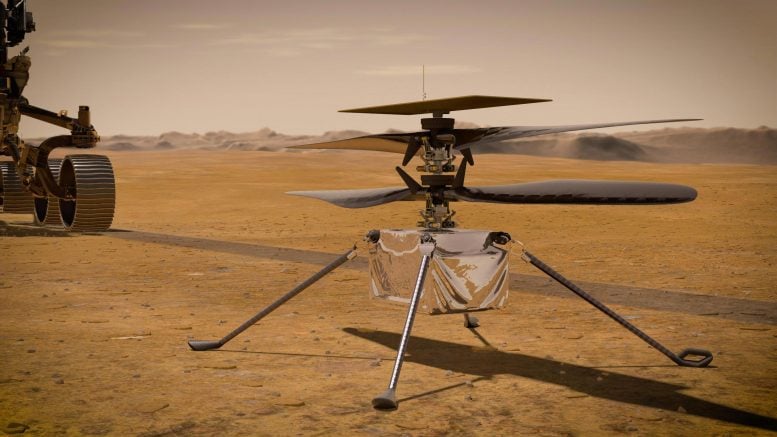
In this illustration, NASA’s Ingenuity Mars Helicopter stands on the Red Planet’s surface as NASA’s Perseverance rover (partially visible on the left) rolls away. Credit: NASA/JPL-Caltech
The Smithsonian’s National Air and Space Museum held its Michael Collins Trophy award ceremony March 24 at the museum’s Steven F. Udvar-hazy Center in Chantilly, VA. The 2022 recipients were Wally Funk for Lifetime Achievement and the Mars Ingenuity Helicopter Team for Current Achievement.
Ingenuity rode to the surface of Mars attached to the belly of the Perseverance rover on February 18, 2021. And several weeks later, on April 19, the rotorcraft achieved the very first powered, controlled flight on another planet.
While Ingenuity arrived on Mars as a technology demonstration, NASA has extended flight operations through September. The historic rotorcraft has successfully completed 23 flights and counting and will continue supporting the Perseverance rover’s upcoming science campaign exploring the ancient river delta of Jezero Crater. Along the way, it will continue pushing its own capabilities to help inform the design of future Mars aerial vehicles.
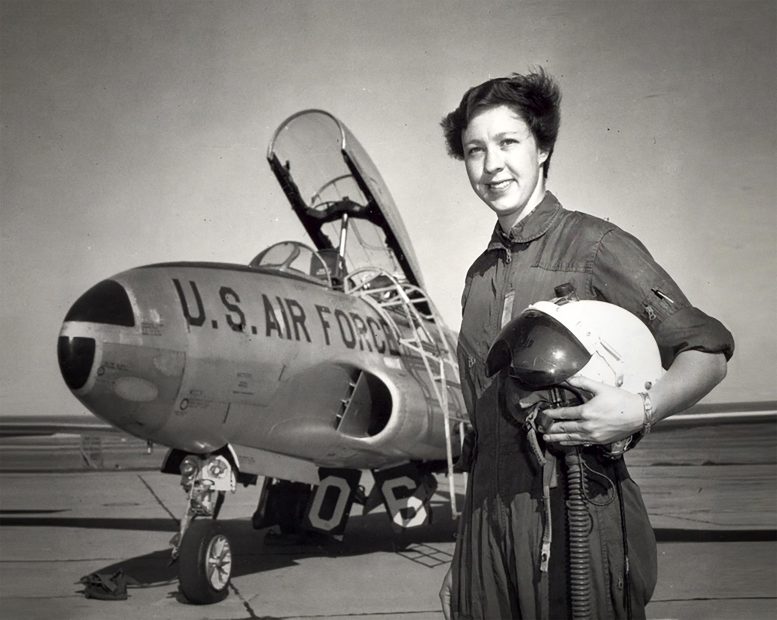
Wally Funk standing with a U.S. Air Force jet. Credit: Courtesy of Blue Origin via Smithsonian Magazine
Lifetime Achievement recipient, Wally Funk and 12 other women pilots underwent spaceflight training in the ’60s as part of an unofficial program – even outperforming the men – but were denied the chance to fly.
Wally never abandoned her dream of going to space and at 82-years-old that dream came true when she launched aboard the FIRST crewed suborbital mission of Blue Origin’s New Shepard capsule.
The Smithsonian’s National Air and Space Museum awards its Michael Collins Trophy annually for Lifetime and Current Achievements. The 2022 recipients are Wally Funk for Lifetime Achievement and the Mars Ingenuity Helicopter Team for Current Achievement; they received their awards at a ceremony on March 24, 2022 at the museum’s Steven F. Udvar-Hazy Center in Chantilly, Virginia.
Established in 1985, the award recognizes outstanding achievements in the fields of aerospace science and technology and their history. Trophy winners receive a miniature version of “The Web of Space,” a sculpture by artist John Safer. The renaming of the trophy in 2020 (previously the National Air and Space Museum Trophy) recognizes Collins’ contributions to aerospace and his service to the museum as director during a critical time in its evolution.
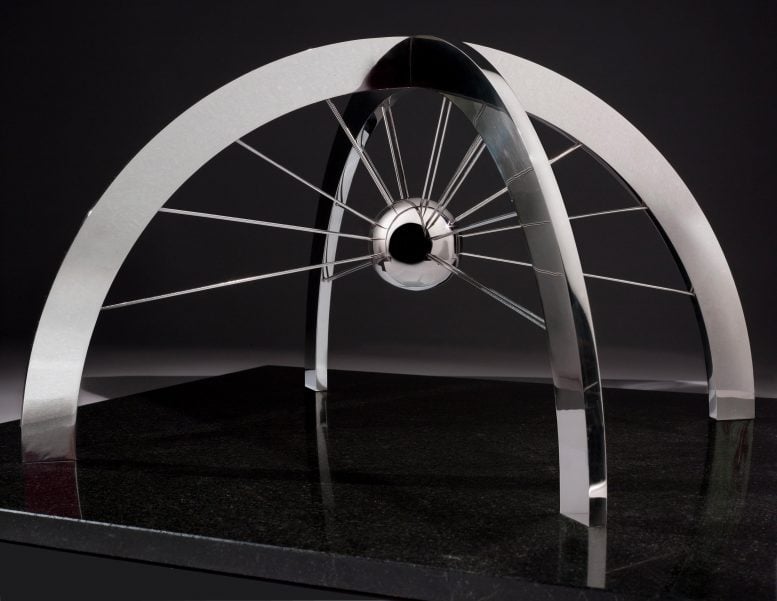
The trophy, called “The Web of Space,” is a sculpture by artist John Safer. Credit: Eric Long, National Air and Space Museum, Smithsonian Institution
“You could say the theme of the 2022 awards is ‘firsts,’” said Chris Browne, acting director of the museum. “Wally Funk often held the title of ‘first’ and ‘only’ throughout her career as a pilot, instructor and air safety investigator. The Ingenuity team accomplished their ‘first’ with a flight on another planet and expanded the boundaries of planetary exploration. We’re thrilled to be able to recognize both for their amazing achievements.”
2022 Michael Collins Trophy Recipients
Funk embodies the adage of “never give up on your dreams.” Since her first flying lesson in 1948 at age 9 and enrollment in flight school at 16, Funk knew that she wanted to fly, despite societal biases against women in aviation. After earning multiple certificates and ratings, she set her sights even higher in the sky—space. She was one of the top-performing participants in the Lovelace Woman in Space Program and was the first woman to serve as an air safety investigator with the National Transportation Safety Board. She dedicated decades of her life to flight instruction and safety, having logged over 19,600 hours of flight time and soloed more than 700 students, while never abandoning her dream of going to space. In 2021, that dream came true when she launched on the first crewed suborbital mission of Blue Origin’s New Shepard capsule.
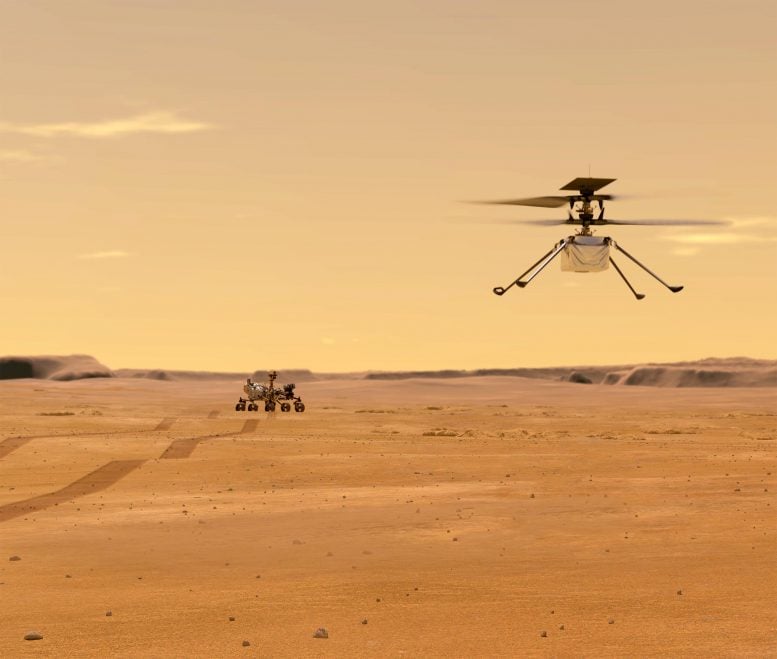
This illustration depicts Mars Helicopter Ingenuity during a test flight on Mars. Ingenuity was taken to the Red Planet strapped to the belly of the Perseverance rover (seen in the background). Ingenuity, a technology experiment, was the first aircraft to achieve controlled flight on another planet. Credit: NASA/JPL-Caltech
In April 2021, under the direction of project manager MiMi Aung and the Mars Ingenuity Helicopter Team, a small robotic helicopter achieved the first powered flight on another planet. Delivered to the surface of Mars by the rover Perseverance, Ingenuity was a technology demonstration aboard the Mars 2020 mission and successfully proved that flight was possible on the Red Planet. It is also now serving as a helpful tool to aid rover exploration of Mars. Ingenuity completed increasingly challenging flights and scouted areas for the Perseverance rover’s upcoming treks. Total flight time for the Mars helicopter in 2021 topped 30 minutes over the course of 18 flights. Ingenuity’s “Wright brothers moment” captured the attention of the public back on planet Earth and inspired everyone to imagine what could be next in planetary exploration.


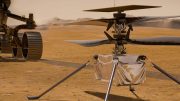

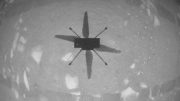
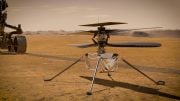
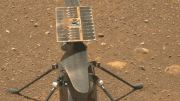
Doesn’t mean much when there is no competition. Not even from Perseverance. Hey NASA, WTF? Where are all the science papers? Where’s our investment?.
I know there always had to be a first, but that doesn’t mean that it isn’t exceptional. Keep going little birdie!